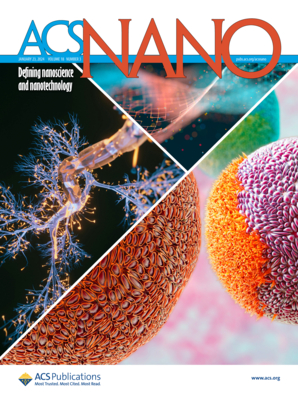Curvature-Induced Electron Delocalization Activates the Bifunctional Catalytic Activity of COF/MXene for High-Performance Lithium–Sulfur Batteries
IF 15.8
1区 材料科学
Q1 CHEMISTRY, MULTIDISCIPLINARY
引用次数: 0
Abstract
Covalent organic frameworks (COFs) have shown promise as bifunctional catalysts to simultaneously mitigate shuttle effects and Li dendrite issues of lithium–sulfur (Li–S) batteries. However, the inherent low conductivity of the COFs has significantly limited their catalytic activity and stability. Herein, bifunctional catalytic activity and durability of the COF/MXene heterostructure are activated by tuning the surface curvatures of COFs interfaced with MXene. The increased curvature of COFs could induce enhanced electron delocalization and alter heterostructure geometry, which in turn strengthens lithium polysulfide adsorption, lowers energy barriers, and stabilizes catalytic sites to promote sulfur redox reactions. Concurrently, the hierarchical COF/MXene structure improves electrolyte penetration and wettability, facilitates rapid ion transport, and homogenizes the Li-ion flux distribution, thus achieving uniform lithium deposition. Consequently, the 1D-COF/MXene Li–S batteries demonstrate a high-rate capacity of 926 mA h g–1 at 4C, a stable cycling performance with a reversible capacity of 589 mA h g–1 at 3C after 500 cycles, and a high reversible capacity of 604 mA h cm–2 with a sulfur loading of 3.5 mg cm–2 under a low electrolyte-to-sulfur ratio of 10 μL mg–1. This work offers an efficacious approach to regulate catalytic activity and stability of catalysts.

求助全文
约1分钟内获得全文
求助全文
来源期刊

ACS Nano
工程技术-材料科学:综合
CiteScore
26.00
自引率
4.10%
发文量
1627
审稿时长
1.7 months
期刊介绍:
ACS Nano, published monthly, serves as an international forum for comprehensive articles on nanoscience and nanotechnology research at the intersections of chemistry, biology, materials science, physics, and engineering. The journal fosters communication among scientists in these communities, facilitating collaboration, new research opportunities, and advancements through discoveries. ACS Nano covers synthesis, assembly, characterization, theory, and simulation of nanostructures, nanobiotechnology, nanofabrication, methods and tools for nanoscience and nanotechnology, and self- and directed-assembly. Alongside original research articles, it offers thorough reviews, perspectives on cutting-edge research, and discussions envisioning the future of nanoscience and nanotechnology.
 求助内容:
求助内容: 应助结果提醒方式:
应助结果提醒方式:


